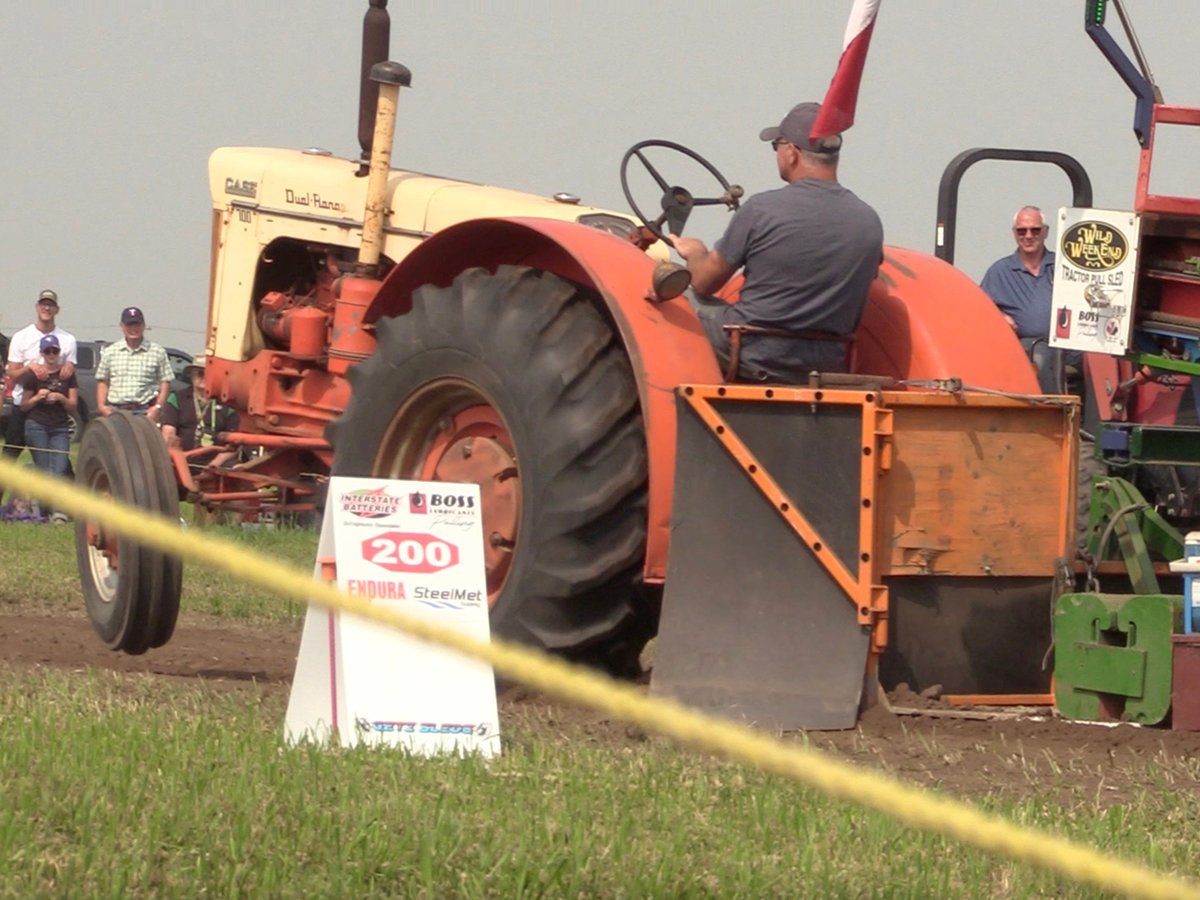Wayne Dorosh is big on heritage.
That realization struck about 20 years ago, after his father began selling woodwork and cabinets that his grandfather had made.
One of those cabinets now hangs in Dorosh’s home.
“I chased that piece for 10 years and bought it back for an outrageous price,” he said.
He has managed to find almost all of the pieces now. It’s important to him to preserve his family history, as well as that of his Ukrainian background.
Dorosh is what’s known as a picker. He searches farms and homesteads for pieces of country furniture and folk art that portray heritage.
Read Also

Vintage power on display at Saskatchewan tractor pull
At the Ag in Motion farm show held earlier this year near Langham, Sask., a vintage tractor pull event drew pretty significant crowds of show goers, who were mostly farmers.
He is most interested in ethnic pieces from the Ukrainian, Doukhobor, Mennonite and Hutterite communities, including textiles, furniture, frames and carvings.
“I just love the colours,” he said. “The homemade, multi-coloured, carved pieces. There’s nothing much left.”
Dorosh said the thrill is incredible when he comes across a desirable piece.
“I’ve done the dance on the road many times” after making a purchase.
He is adamant that he does not want pieces that people wish to keep in their families. He tries to treat people fairly and make sure they have consulted with family members before he buys.
“Most of them say, ‘you want that junk?’ A lot of people don’t care about heritage.”
He does sell many of his purchases to contacts throughout Canada. He’s been shipping loads to Vancouver for 10 years.
One collection he is trying to sell right now includes 15 bowls and flowerpots made by the late potter Peter Rupchan. Dorosh said they should be somewhere other than wherever he can find room around his home.
“This is heritage,” he said. “It should be taken and recognized for what it is.”
Dorosh comes across one or two Rupchan bowls a year and can’t resist them, although he can’t quite explain why. He has paid as much as $700 for a pot.
He said pottery collectors know about Rupchan but few others do.
Rupchan was a Ukrainian immigrant who lived in the Usherville-Endeavour area of northeastern Saskatchewan. Born in 1883, he came to Canada in 1905.
Considered by many to be ahead of his time, he made pottery with clay found on his land, fired it in an earthen kiln he built with the help of some neighbours and then travelled to sell it.
“He’d pot for days and days and weeks on end and then fill a wagon and hawk his pots,” Dorosh said.
According to Saskatchewan author Judith Silverthorne’s biography of Rupchan, he had no interest in farming, even though that’s how he was supposed to be making his living. He loved the creation of pottery but he was under no illusions that people could afford art.
He concentrated on making practical cooking bowls and sold them for between five and 35 cents – prices his customers could afford. Sales supplemented his farming income before his accidental death in 1944.
Rupchan also made clay chicken and rooster whistles for children to play with. There is only one known to have survived, but Dorosh said he knows where there is at least one more.
Dorosh would love to see his collection find a permanent home in Rupchan’s home area but he realizes it could be difficult to get the price he wants. Museums, of course, want him to donate it.

















